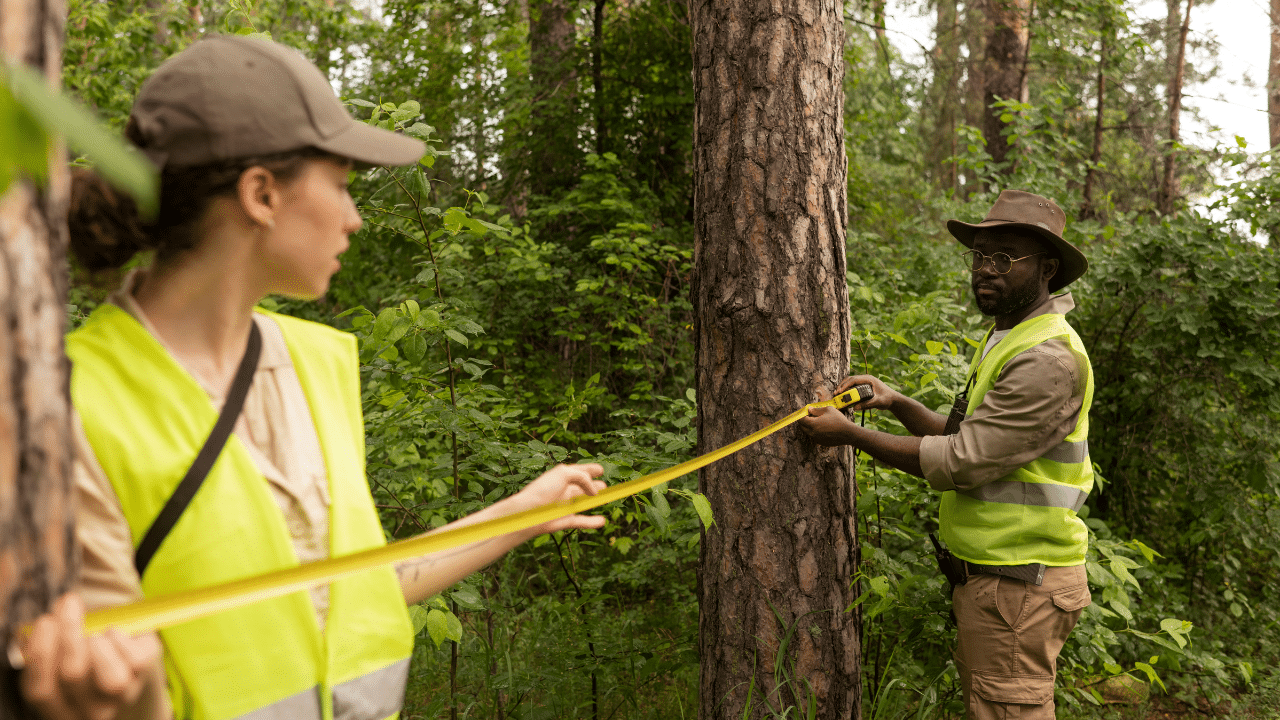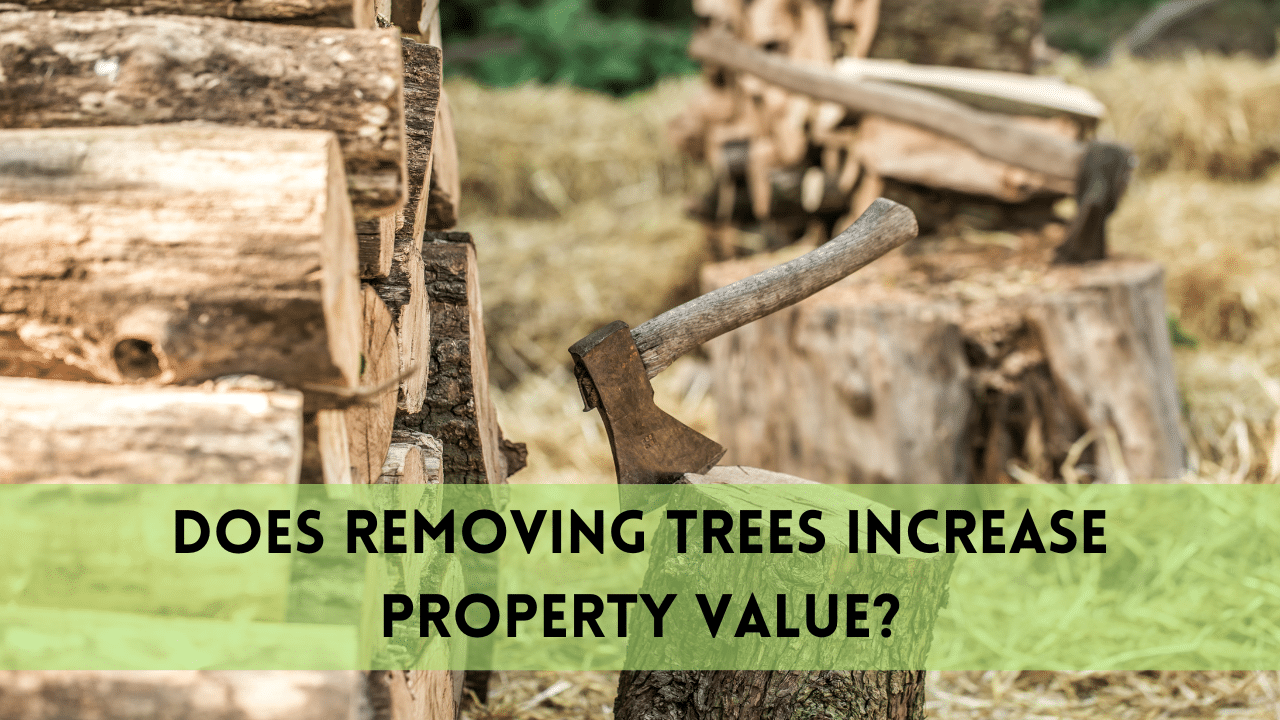The question “Does removing trees increase property value?” is frequently asked. While trees provide beauty and shade, they can also increase property value. Let’s look at how removing trees increase property value and what you should know before making a decision.
Understanding Trees’ Impact on Property Value
Trees can be a double-edged sword in terms of property value. On the one hand, they improve a property’s aesthetics, contribute to environmental health, and provide energy savings. In contrast, poorly managed trees or too close to structures might have the opposite impact.
Pros and Cons of Removing Trees:
1. Potential increase in property value
Sometimes removing trees increase property value. Here’s how.
Improved Curb Appeal
A well-kept lawn and a few strategically placed trees can improve curb appeal. If the trees on your property are overgrown or obstructing views, removing them may improve your landscape’s overall appearance and feel. For example, an unkempt or diseased tree can give your house a neglected appearance, whereas a clean, open view can make it appear more inviting.
Improved Sunlight and Views
Removing trees increase property value significantly. Sunlight warms and brightens your home’s interior, making it more inviting to potential purchasers. Furthermore, trees that block picturesque views can reduce your property’s desirability. Clearing these trees can reveal stunning scenery and make your property more appealing.
Lower maintenance costs
Pruning, fertilization, and insect control are all examples of routine tree maintenance. If your property contains a large number of trees, the maintenance fees might add up quickly. Eliminating some trees may reduce these ongoing costs, which might appeal to buyers who want low-care requirements.
2. Possible Decrease in Property Value
Loss of privacy
Trees often give valuable seclusion by acting as natural barriers between neighbors and passersby. Removing them may expose your property, discouraging possible buyers who seek seclusion.
Higher Erosion Risk
Trees serve an essential function in avoiding soil erosion. Removing too many trees, particularly on slopes or near water bodies, may increase erosion risk. This can cause structural concerns and lower the property’s value.
Environmental Impact
Trees help to make the environment healthier by improving air quality and providing habitat for local wildlife. Removing them may have negative environmental consequences, discouraging eco-conscious customers.
Does Removing Trees Increase Property Value
Steps for Determining Whether Removing Trees Increase Property Value
If you’re thinking of removing trees increase property value, take these steps to make an informed decision:
1. Evaluate the condition of your trees
Before making any decisions, assess the health of your trees. Are they healthy, well-kept, and visually appealing? Are they sick, overgrown, and producing problems? This examination will assist you in determining whether removal is essential.
2. Consult a professional arborist
A trained arborist can provide helpful information on the health of your trees and their possible impact on property value. They can also propose which trees should be removed and which should be left standing.
3. Assess your property’s overall landscape
Consider the overall layout of your property. Are there too many trees, or are they positioned in a way that detracts from the property’s aesthetics? A balanced approach, with a few strategically placed trees and open spaces, is frequently the most effective.

4. Consider local real estate trends
Investigate the real estate market in your area. What do the local buyers prefer? If well-kept landscapes with fewer trees are in demand, eliminating certain trees could be beneficial. In contrast, if massive, mature trees are treasured, they may be best kept.
5. Calculate the cost versus benefit
Compare the cost of tree removal to the potential improvement in property value. If the expense of tree removal is significant and the predicted increase property value is slight, it may not be worth it.
6. Replacement plan
If you remove trees, try growing new ones in various areas. This can assist in maintaining some of the benefits that trees provide while also improving the appearance of your property.
FAQs
Does removing trees always boost property value?
Not always. It is determined by various factors, including the trees’ condition, location, and local real estate trends.
How do I determine whether a tree is worth removing?
Examine the tree’s health and how it affects the appearance and maintenance of your property. Consulting with a trained arborist can also provide helpful information.
Will tree removal damage my property’s privacy?
Yes, removing trees that provide privacy may make your home more visible, which may be a disadvantage for some buyers.
What is the environmental impact of removing trees?
Tree removal can impact air quality and lead to increased soil erosion. Understanding these consequences before removing trees is critical.
How can I increase property value if I need to remove trees?
Consider replacing removed trees with new ones in different areas, and check with real estate pros to verify your decisions are market-appropriate.
Conclusion
So, does removing trees increase property value? The answer isn’t a straightforward yes or no. It is determined by various factors, including the trees’ condition and placement, the general landscape, and local market trends. By carefully examining these factors and working with professionals, you can make an informed decision consistent with your property objectives.
Remember, if you need professional tree services, such as removal and upkeep, contact Tree Service West University Place. We provide experienced advice and high-quality service to help you make the right decisions for your home.

